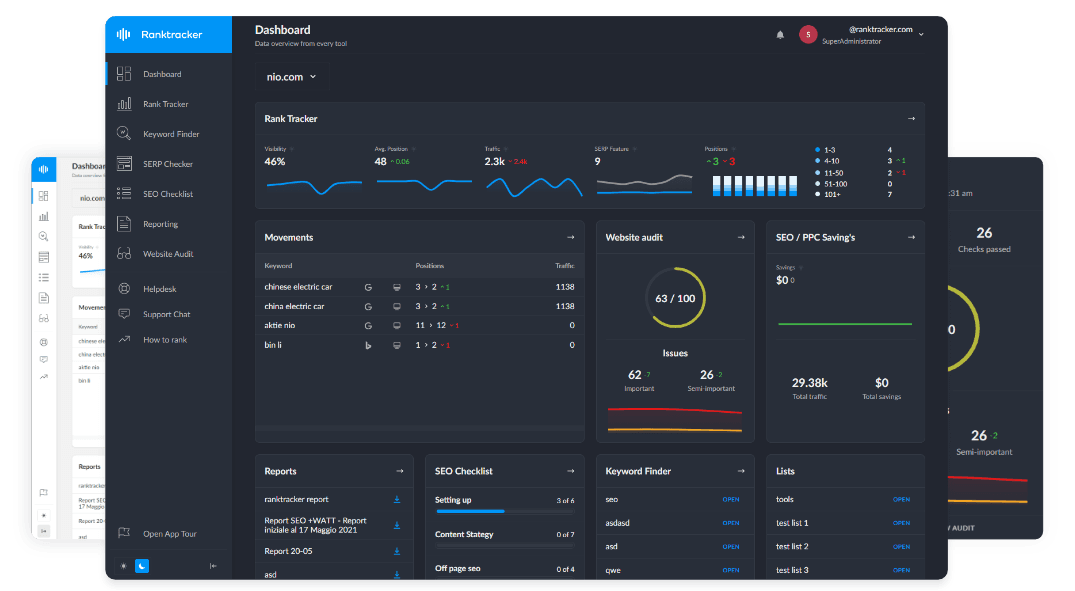Intro
Getting discovered online isn’t just about ranking on Google anymore. Whether you’re a marketer, app developer, or digital brand, you’re competing for attention in two parallel ecosystems: the web and the app stores. This is where the worlds of SEO (Search Engine Optimization) and ASO (App Store Optimization) collide—and where understanding both is now critical to success.
Let’s break down what makes them different, where their strategies overlap, and how a unified approach can unlock the next level of growth.
What is SEO? (Search Engine Optimization)
SEO is the process of optimizing your website so it ranks higher in search engines like Google or Bing. The ultimate goal? To drive qualified, high-intent visitors to your site and convert them into customers or users.
Key pillars of SEO include:
-
Keyword research and mapping user intent
-
Creating valuable, relevant content
-
Optimizing meta titles, descriptions, and headers
-
Building quality backlinks
-
Improving site speed and mobile experience
-
Enhancing user engagement signals
If a potential customer searches for information such as “Best iPhone cleaner apps,” strong SEO means your page is front and center, attracting organic clicks and building trust.
What is ASO? (App Store Optimization)
ASO, on the other hand, focuses exclusively on your app’s discoverability and conversion rate within mobile app marketplaces like Apple’s App Store and Google Play. ASO is about ensuring your app appears in searches, gets downloaded, and retains users.
Main elements of ASO:
-
Choosing effective keywords for your app title and description
-
Optimizing your app’s name and subtitle
-
Using high-quality icons, screenshots, and preview videos
-
Collecting positive ratings and reviews
-
Updating regularly and encouraging user engagement
Consider an example from the utility space: If you’ve launched a tool like Clever Cleaner, a mobile app designed to declutter and optimize your device, effective ASO ensures it stands out when users search for phone cleaning solutions among thousands of competitors.
Where ASO and SEO Overlap
Despite targeting different platforms, ASO and SEO share some foundational principles:
1. Keyword Research & Intent
Both disciplines start with understanding what users are searching for—whether it’s a problem to solve, a type of app, or a specific feature. They rely heavily on data: search volumes, competition, and trending topics.
2. Optimization for Algorithms and People
Both require strategic keyword placement—ASO in app titles/descriptions, SEO in web content and metadata. The trick is balancing optimization for algorithms with content that converts human visitors.
3. Visual Impact
On a website, images and structured data boost engagement. In app stores, your icon, screenshots, and videos play a similar role in boosting downloads and trust.
4. Social Proof & User Signals
Reviews, ratings, and user-generated content are trust signals valued by both Google and app store algorithms. The more positive engagement, the higher your visibility.
5. Continuous Improvement
Both require ongoing monitoring, analytics, and iteration as trends, algorithms, and competition change.
Where ASO and SEO Diverge
While there’s overlap, their differences are critical to understand:
1. Platform & Ranking Signals
SEO is about ranking web pages in search engines, factoring in backlinks, domain authority, content freshness, and technical health. ASO is about app listings—where downloads, engagement, reviews, and keyword placement matter most.
2. Conversion Actions
SEO aims for web clicks, leads, or sales. ASO is about convincing someone to tap “install,” and then keeping them engaged in the app itself.
3. Content Types
SEO content can be in-depth guides, product pages, blog posts, or videos. ASO content focuses on the app’s title, subtitle, description, and media assets—all designed to drive installs.
4. Off-Platform Influence
SEO is heavily influenced by external links and digital PR. ASO has no equivalent—app store algorithms don’t consider web backlinks, but instead focus on in-app engagement metrics.
5. Analytics Tools
SEO uses platforms like Google Analytics, Google Search Console, and SEO toolkits. ASO relies on App Store Connect, Google Play Console, and ASO tracking platforms to monitor visibility and downloads.
Why You Need Both: A Unified Discovery Strategy
Today’s users are cross-platform by default. Someone might research solutions via a blog post about the Best iPhone cleaner apps—then head to the App Store to install an app. Or, they might search directly in the store for a tool like Clever Cleaner, but later look up detailed tips on your website.
Focusing only on SEO means missing out on app users; focusing only on ASO means you’re invisible on the wider web. Brands that integrate both channels see bigger wins:
-
Use SEO to capture top-of-funnel users looking for solutions or advice.
-
Use ASO to convert intent-driven app store browsers into downloads.
-
Cross-link your assets (site, blog, and app store listings) to capture traffic from every angle.
For example, in a well-optimized guide about iPhone maintenance, featuring a leading tool like Clever Cleaner gives users a clear path from information to solution.
Actionable Tips to Combine ASO and SEO
-
Map your keywords: Find overlaps between what people search on Google and in app stores. Adjust content and app listings accordingly.
-
Leverage your website: Use your web platform to support your app (e.g., tutorials, FAQ, support, blog content) and include a single, prominent link to your app’s download page.
-
Cross-promote authentically: Feature your app in relevant articles only where it genuinely adds value.
-
Monitor analytics: Use both web and app analytics to understand user journeys, optimize conversion points, and uncover opportunities for improvement.
-
Solicit reviews everywhere: Encourage satisfied users to leave reviews in both the app store and on your web content to boost trust across platforms.
Common Mistakes to Avoid
-
Treating ASO and SEO as separate silos.
-
Ignoring analytics and trends from one channel in the other.
-
Over-optimizing keywords at the expense of readability or user experience.
-
Neglecting visual assets in the app store or on your site.
Conclusion
The line between web and app is fading fast. Users expect a seamless, cross-platform experience—and the most successful brands are those who optimize for both web and app discovery.
SEO and ASO aren’t competing strategies. They’re complementary forces that, when aligned, drive more traffic, more downloads, and stronger retention. Start by understanding where they overlap and where they diverge. Then, use that insight to build a unified digital presence—meeting users wherever and however they search.

